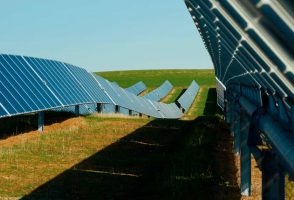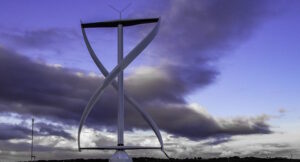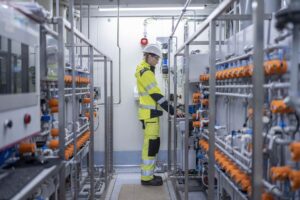Danish energy giant Ørsted has called for the establishment of “no-sail zones” at a eight offshore wind projects operating in European waters, following an incident at its 400MW Anholt Offshore Wind Farm in Denmark this week.
Ørsted, which is the world’s largest developer of offshore wind projects, said on Wednesday that a rotor including three blades had separated from the nacelle of one of the Anholt project’s turbines and fallen into the sea. No one was injured.
The company said it was investigating the cause of the incident and in the meantime had taken the “extraordinary precautionary measure” of requesting the establishment of ‘no sail zones’ at all its projects using the same Siemens Gamesa 3.6MW – 4MW turbines.
Besides Anholt – whose 111 Siemens Gamesa 3.6MW turbines were commissioned in 2013 – Ørsted said the projects affected by ‘no-sail zones’ would include: West of Duddon Sands, Lincs, Gunfleet Sands, Burbo Bank and Walney 1 & 2 in the UK; Borkum Riffgrund 1 in Germany, and; Avedøre Holme in Denmark.
“So far, the investigation has not pointed to a systemic cause of the issue, but we have taken this precautionary step as safety is our first priority,” a company statement said.
“The assets continue to operate as normal with the relevant safety protocols, and customers in the relevant markets will not be affected.”
The establishment of so many no-sail zones in UK, German and Danish waters does indeed seem extraordinary, but then in light of the fact that the turbine parts in question each weigh up to 205 tonnes for the nacelle and 18 tonnes per blade, it seems entirely reasonable.
Siemens Gamesa does not appear to have issued a formal statement on the incident as yet, but a spokesperson for the German-Spanish wind giant was quoted as saying it was “working with Ørsted to determine the root cause and decide on next steps.”
The timing is not ideal; just this week the company announced it had started production of massive 377 feet long B115 blades at its Aalborg facility in Denmark.
We have now started production of the first B115 blades in Aalborg, Denmark. The 115-meter long blade is available as standard IntegralBlade and will also be produced using our unique RecyclableBlade technology. #Leadingtheoffshorerevolution#Strongwindsofchange pic.twitter.com/tB8ss5Jb0n
— Siemens Gamesa (@SiemensGamesa) March 31, 2022
The Maritime Executive has reported that the stock price of the German-Spanish turbine manufacturer had fallen by more than 8 per cent following news of the incident.
The incident coincides with dire warnings from global onshore wind turbine makers that a combination of rising material and development costs and falling auction prices was leading to an unsustainable situation where many OEMs were selling at a loss.
Recharge News reported earlier this week that top executives from GE, Nordex and Enercon had told WindEurope 2022 that it was becoming increasingly difficult for the sector to deliver Europe’s planned tripling of wind capacity by 2030.
“The state of the supply chain is ultimately unhealthy right now,” GE Renewable Energy chief executive for onshore wind, Sheri Hickok, told a panel in Bilbao on Tuesday.
“It is unhealthy because we have an inflationary market that is beyond what anybody anticipated even last year. Steel is going up three times.”









